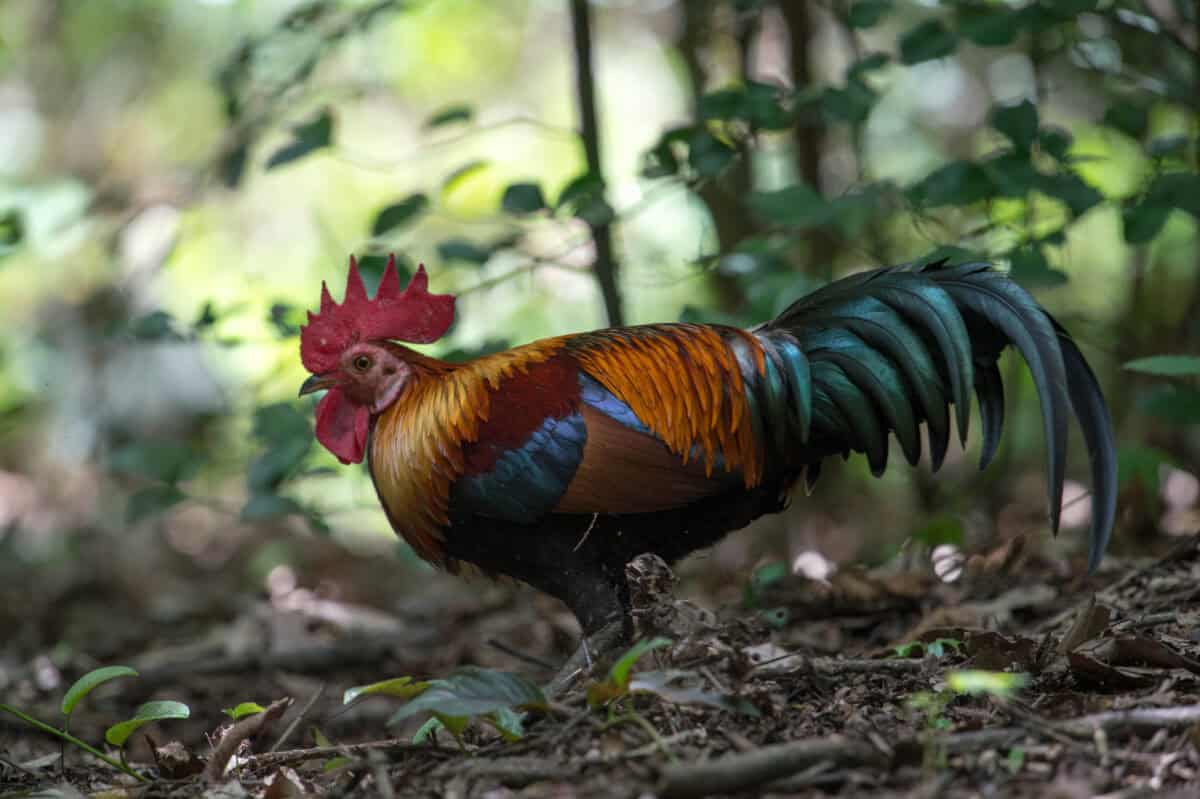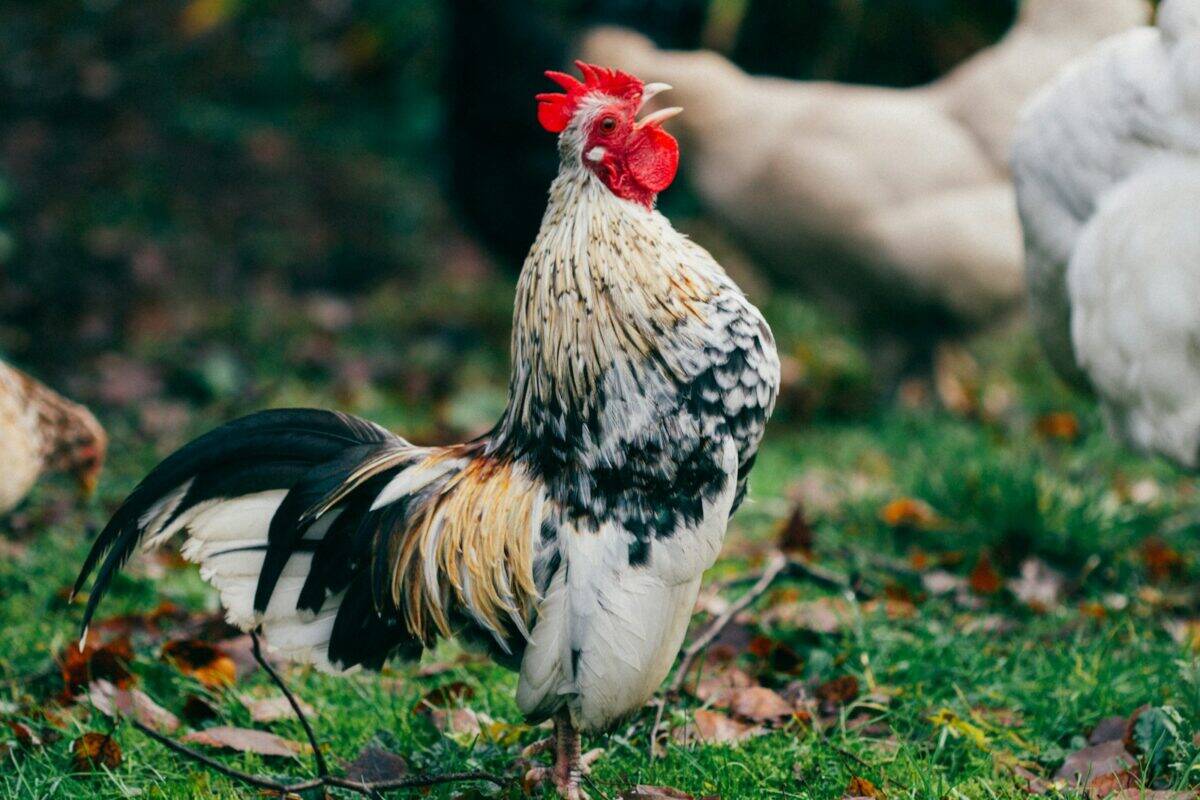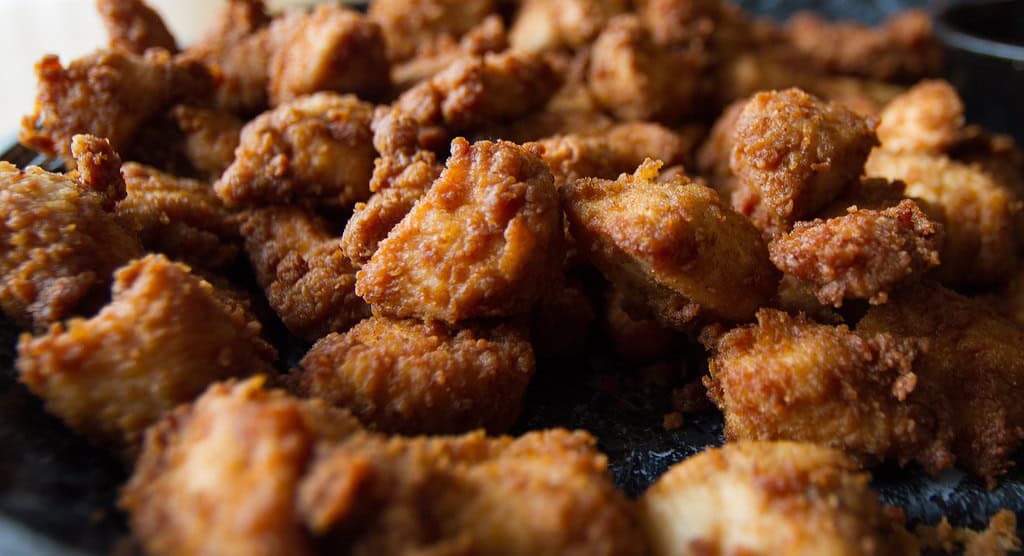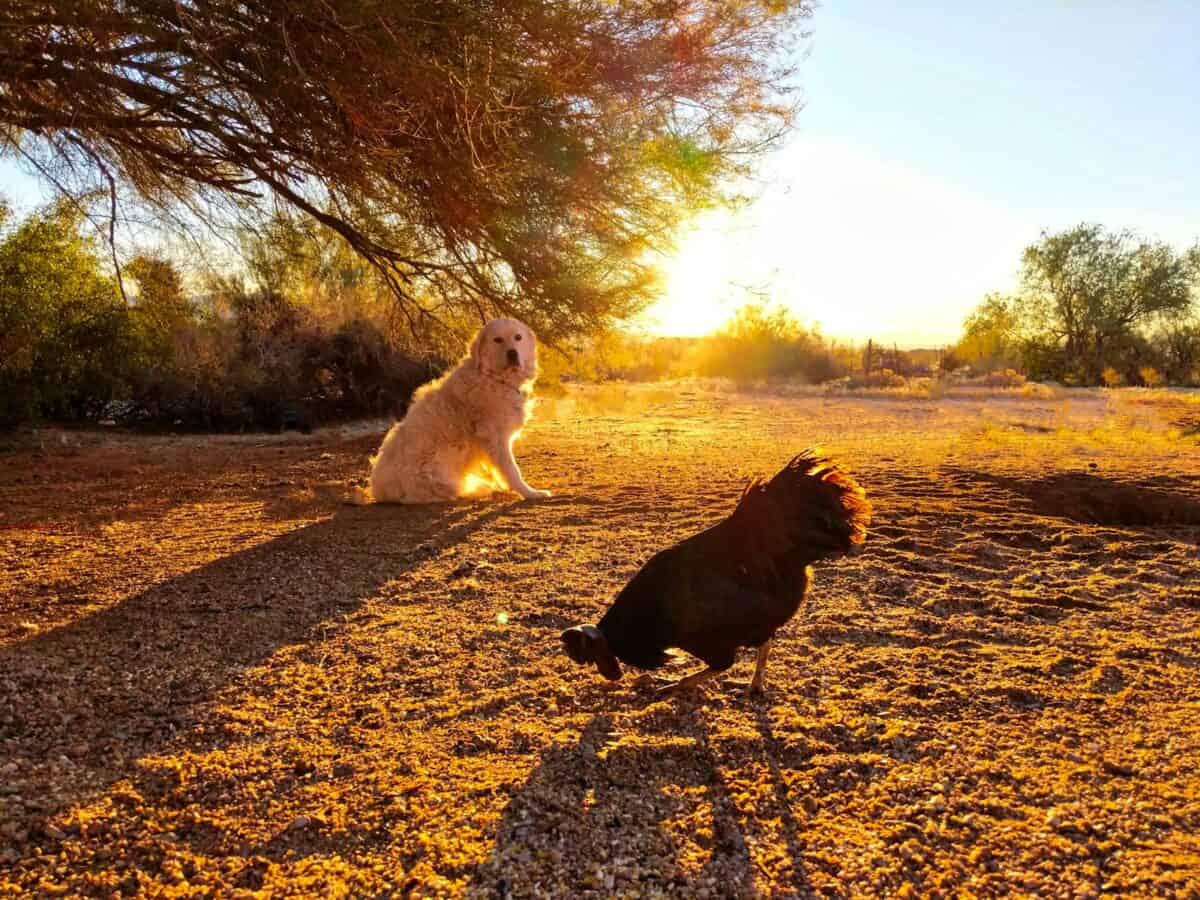The humble chicken has traversed a remarkable path through human history, evolving from a sacred symbol to a global dietary staple. This omnipresent bird, scientifically known as Gallus gallus domesticus, has embedded itself so deeply in human civilization that it’s easy to overlook its extraordinary journey from the jungles of Southeast Asia to dinner plates worldwide. Today, with over 25 billion chickens on Earth at any given time—more than any other bird species—they represent humanity’s most numerous domestic animal companion. But how did this transformation occur? How did a jungle fowl become both a powerful cultural icon and the world’s most consumed meat? The story of the chicken is, in many ways, the story of human civilization itself—a tale of migration, domestication, religious symbolism, industrialization, and ultimately, global culinary dominance.
The Ancient Origins of Chicken Domestication

Archaeological evidence suggests that chickens were first domesticated from the red junglefowl (Gallus gallus) in Southeast Asia, particularly in regions of what is now Vietnam, Thailand, and southern China. This domestication process began approximately 8,000-10,000 years ago, making chickens one of humanity’s oldest animal partnerships. Recent genetic studies have confirmed this origin story while also revealing that multiple domestication events likely occurred, with some evidence suggesting that the gray junglefowl (Gallus sonneratii) may have also contributed to the genetic makeup of domestic chickens.
Initially, these early domesticated birds were not primarily kept for food but rather for cockfighting, religious ceremonies, and divination practices. The fighting spirit of roosters made them valuable for entertainment and gambling, while their predictable crowing patterns helped mark the hours of the day. Archaeological findings from the Indus Valley, China, and ancient Egypt show that chickens had spread widely across Asia and into Africa and Europe by 2000 BCE, carried along ancient trade routes by merchants who recognized their portable value as living commodities that could produce both eggs and offspring.
Sacred Birds: Chickens in Ancient Religion

Long before chickens became a primary food source, they held sacred status in numerous ancient cultures. In Zoroastrianism, one of the world’s oldest continuously practiced religions, the rooster was considered a sacred animal that fought against evil with its morning crow. Persian religious texts portrayed the rooster as a creature that called humans to prayer and righteous action. Similarly, in ancient Rome, sacred chickens were kept by priests who practiced pullomancy—divination through observing chicken behavior, particularly their eating patterns. Before major military campaigns, Roman generals would consult these sacred birds; if they ate eagerly, it was considered a favorable omen, while refusal to eat signaled potential disaster.
In ancient Chinese symbolism, the rooster represented fidelity and punctuality, while in Vietnamese culture, it embodied the five virtues: literary, martial, courage, benevolence, and reliability. Hindu traditions revered the rooster for its ability to predict sunrise, associating it with solar deities. These religious and cultural associations elevated chickens beyond mere utility, establishing them as creatures with spiritual significance long before they became central to human diets. This sacred status may explain why, for many centuries, chickens were more likely to be sacrificed in religious ceremonies than served at ordinary meals.
The Spread of Chickens Across Civilizations

The chicken’s journey across continents represents one of the most successful animal migrations facilitated by humans. From their Southeast Asian origins, chickens reached the Middle East by 2000 BCE and Egypt shortly thereafter. Their arrival in Europe came through multiple routes—via trade with Persia, through Greek colonies, and later through Roman expansion. Phoenician traders were instrumental in spreading chickens throughout the Mediterranean basin, while the Silk Road facilitated their movement across Asia. By the time of the Roman Empire, chickens had become established throughout Europe, though they remained relatively expensive compared to other livestock.
The voyage to the Americas came much later, with Christopher Columbus reportedly bringing chickens on his second journey in 1493. Some archaeological evidence suggests pre-Columbian chicken presence in South America, potentially indicating Polynesian contact, though this remains controversial among scholars. By the 16th century, European colonization had established chickens globally, with each region developing distinctive breeds adapted to local conditions. This worldwide distribution set the stage for chickens to become a universal food source, transcending cultural boundaries in a way few other animals have achieved.
Cockfighting: The Bloody Sport That Spread Chicken Husbandry

Paradoxically, one of the key drivers of chicken dispersion throughout the ancient and medieval world was not their utility as food, but their value for entertainment through cockfighting. This blood sport, in which roosters with natural fighting instincts were pitted against each other, often with razor-sharp spurs attached to their legs, became wildly popular across cultures and continents. From ancient India and Persia to Greece, Rome, and later throughout Europe and the Americas, cockfighting crossed cultural boundaries with remarkable ease. The sport’s widespread appeal helped ensure that chickens traveled wherever humans went.
The breeding of game fowl for fighting created an informal global network of chicken enthusiasts who selectively bred birds for courage, strength, and aggression—traits still found in modern game breeds. These fighting chickens became valuable commodities, sometimes worth more than slaves in ancient economies. While now banned in many countries due to animal welfare concerns, cockfighting remains legal in some parts of the world and continues underground elsewhere. Ironically, this ancient blood sport contributed significantly to chicken genetic diversity and global distribution, ultimately helping transform chickens into the world’s most numerous bird species and preparing the ground for their later role as a food staple.
From Luxury to Commonplace: Chickens Enter the Diet

For much of human history, chicken meat was considered a luxury rather than a dietary staple. In ancient Rome, while eggs were common, chicken meat was reserved for special occasions or medicinal purposes. This pattern persisted through medieval Europe, where chickens were valued primarily for their egg-laying abilities, with the birds themselves typically only consumed on special occasions or when they stopped laying. Historical records from medieval Europe indicate that chicken meat was often more expensive than pork or beef, making it accessible primarily to the wealthy. Even in China, where chicken consumption had earlier precedent, it remained less common than pork.
The transition of chicken from luxury to everyday food began gradually in the 19th century but accelerated dramatically in the 20th century. In America, the phrase “a chicken in every pot”—popularized during Herbert Hoover’s 1928 presidential campaign—signaled chicken’s aspirational status as a measure of prosperity. This shift was enabled by improvements in breeding, feeding, and housing that increased productivity while decreasing costs. By the mid-20th century, technological and agricultural innovations had transformed chicken from an occasional treat to an affordable protein source available to virtually all economic classes in developed countries—a remarkable reversal of its historical status.
The Cultural Symbolism of the Rooster

The rooster, with its proud stance and morning crow, has accumulated rich symbolic significance across cultures. In France, the Gallic rooster (le coq gaulois) became a national emblem, representing vigilance and bravery. This association dates back to Roman times, playing on the Latin pun between Gallus (a Gaul) and gallus (a rooster). The rooster continues to appear on French national sports team uniforms and governmental emblems. In Japan, the rooster is associated with the sun goddess Amaterasu and symbolizes the breaking of night into day. Chinese zodiac traditions feature the rooster as one of twelve animal signs, representing fidelity and punctuality.
Christian symbolism adopted the rooster as a reminder of Peter’s denial of Jesus, who prophesied that Peter would deny him three times before the rooster crowed. Consequently, weathervanes on church steeples often feature roosters, serving as calls to vigilance and repentance. In folklore worldwide, roosters are credited with supernatural abilities to ward off evil spirits, perhaps because their morning crowing coincides with the retreat of darkness. These diverse cultural associations demonstrate how deeply the rooster has penetrated human consciousness beyond its practical value, becoming a potent symbol that transcends its biological reality.
Eggs in Culture: From Fertility Symbols to Breakfast Staple

Chicken eggs have carried profound symbolic significance throughout human history, often representing fertility, rebirth, and potential. Ancient Egyptian, Persian, Greek, and Chinese cultures all associated eggs with creation myths and cosmic origins. This symbolism was later absorbed into many religious traditions, most famously in Easter celebrations, where decorated eggs represent Christ’s resurrection and the renewal of spring. The practice of decorating eggs dates back thousands of years, with elaborately dyed eggs found in archaeological sites across Eurasia. The Ukrainian pysanky tradition and Chinese tea eggs demonstrate how egg decoration evolved into sophisticated art forms across different cultures.
Beyond symbolism, eggs gradually became dietary staples worldwide. Historical records show that ancient Romans preserved eggs using various methods, including storing them in salt or vinegar solutions. By the Middle Ages, eggs provided critical protein during lean times and were allowed during some fasting periods when meat was forbidden. Today, global annual egg production exceeds 80 million metric tons, with China producing approximately 40% of the world’s eggs. The nutritional profile of eggs—providing complete protein, vitamins, and minerals in an affordable package—has made them fundamental to cuisines globally, from French omelets to Chinese tea eggs, Japanese tamago, and Middle Eastern shakshuka.
The Industrial Revolution of Chicken Farming

The most dramatic transformation in the chicken’s 10,000-year relationship with humanity occurred in the mid-20th century with the industrialization of poultry production. This revolution began in earnest in the 1940s when improvements in vitamin supplementation (particularly synthetic vitamin D) allowed year-round indoor raising of chickens. The development of antibiotics further enabled higher density housing by controlling disease spread. In 1923, Cecile Steele of Delaware accidentally received 500 chicks instead of 50, inadvertently pioneering commercial broiler production when she successfully raised and sold them all. By the 1960s, vertical integration had transformed chicken production from small farmyard flocks to massive operations where a single company controlled breeding, hatching, feed production, raising, processing, and distribution.
The genetic engineering of chickens represented another revolutionary step. Modern broiler (meat) chickens grow to market weight in just 6-7 weeks, compared to 16 weeks in the 1950s, while laying hens produce over 300 eggs annually, far exceeding their wild ancestors’ 10-15 eggs. This industrialization dramatically reduced costs—adjusted for inflation, chicken meat costs approximately 80% less today than in the 1950s. However, these changes came with significant animal welfare concerns, environmental impacts, and consolidation of the industry. Today, just a handful of companies control most global chicken production, with the top three poultry companies processing over 1 billion chickens annually in the United States alone.
Global Culinary Traditions: Chicken Across Cultures

Few ingredients demonstrate global culinary diversity better than chicken. In Chinese cuisine, preparation methods range from Cantonese white-cut chicken (bai qie ji) showcasing pure flavor to fiery Sichuan kung pao chicken. Indian traditions embrace chicken in countless curries, from creamy butter chicken to complex biryani. Middle Eastern cooks perfume their chicken dishes with sumac, za’atar, and saffron in preparations like musakhan. African cuisines feature peanut-based chicken stews in West Africa and berbere-spiced doro wat in Ethiopia. European traditions range from coq au vin in France to paprikash in Hungary and cacciatore in Italy.
The Americas developed their own distinctive chicken preparations, from Southern fried chicken and barbecue to Mexican mole poblano, which traditionally uses chicken as a canvas for its complex sauce containing chocolate and dozens of spices. Caribbean jerk chicken demonstrates the fusion of African, European, and indigenous influences. Japanese cuisine treats chicken with characteristic precision in yakitori (grilled skewers) and karaage (fried chicken). Korean double-fried chicken has become a global phenomenon in recent decades. This incredible diversity of preparation methods demonstrates chicken’s remarkable culinary adaptability—it can be boiled, roasted, fried, grilled, braised, stewed, steamed, or smoked, absorbing the flavors of virtually any cuisine while maintaining its fundamental appeal.
Modern Ethical Considerations and Alternatives

The industrialization of chicken farming has raised significant ethical questions about animal welfare, environmental sustainability, and public health. Modern broiler chickens grow so rapidly that their legs often cannot support their weight, while battery cage systems for laying hens have been criticized for restricting natural behaviors. These concerns have prompted regulatory changes in many regions, with the European Union banning conventional battery cages and several U.S. states following suit. Alternative production systems have emerged, including free-range, pasture-raised, and organic certification programs that attempt to address welfare concerns while providing consumers with more ethically aligned options.
Environmental impacts of industrial chicken production include waste management challenges, greenhouse gas emissions, and land use for feed production. While chicken remains more environmentally efficient than beef in terms of feed conversion ratio and greenhouse gas emissions, the scale of production creates significant environmental footprints. Public health concerns include antibiotic resistance from routine antibiotic use in poultry production and disease transmission risk in densely populated facilities. These ethical considerations have contributed to the rising popularity of plant-based chicken alternatives and the development of cultured meat technology, which aims to produce real chicken meat without raising animals. These innovations may represent the next major transformation in humanity’s ancient relationship with chickens.
The Chicken in Popular Culture and Art

The chicken’s cultural imprint extends well beyond the dining table into literature, art, and entertainment. In visual art, chickens appeared in ancient Egyptian hieroglyphs, Roman mosaics, and medieval manuscripts before becoming popular subjects for still-life paintings. The chicken has featured prominently in literature, from Chaucer’s “The Nun’s Priest’s Tale” featuring Chauntecleer the rooster to children’s classics like “Chicken Little” and “The Little Red Hen.” Modern children’s literature continues this tradition with books like “Click, Clack, Moo” and “Interrupting Chicken.” In film and television, animated chickens star in works ranging from Disney’s “Chicken Little” to Aardman’s “Chicken Run,” while live chickens make memorable appearances in everything from “Rocky” to “Arrested Development.”
Idioms and expressions featuring chickens permeate everyday language: “chicken out,” “rule the roost,” “chicken and egg problem,” “counting your chickens before they hatch,” and dozens more. These linguistic remnants demonstrate how deeply the chicken has penetrated human consciousness. Even in the digital age, chickens maintain cultural relevance, from the “chicken dance” at weddings to viral internet phenomena like “why did the chicken cross the road” jokes and YouTube videos of chickens engaging in unexpected behaviors. This persistent cultural presence underscores the chicken’s unique position as both an everyday creature and a source of endless human fascination.
The Future of Human-Chicken Relations

The story of the chicken continues to evolve as humanity faces new challenges and opportunities in the 21st century. Rising global protein demand, particularly in developing economies, suggests chicken consumption will continue increasing, with projections indicating it will surpass pork as the world’s most consumed meat within the next decade. Simultaneously, technological innovations are transforming production methods. Precision breeding using genomic selection rather than genetic modification is creating chickens that grow more efficiently while addressing welfare concerns like skeletal problems. Advanced monitoring systems using artificial intelligence now track individual bird health and behavior in commercial facilities, potentially improving welfare while increasing productivity.
Alternative protein sources, including plant-based chicken substitutes and cultured meat grown from chicken cells, may represent the next revolution in this ancient relationship. These technologies could potentially reduce environmental impacts and eliminate animal welfare concerns while maintaining the familiar taste and nutritional benefits consumers expect. Meanwhile, a countertrend toward heritage breeds, small-scale production, and backyard chicken keeping demonstrates continuing interest in more traditional human-chicken relationships. From sacred bird to industrial product to potential technological abstraction, the chicken’s journey through human culture continues to reflect our changing values, technologies, and understanding of our relationship with the natural world.
Conclusion: The Enduring Legacy of the Chicken

The chicken’s remarkable journey from jungle fowl to global staple represents one of humanity’s most successful and complex relationships with another species. From its origins in the forests of Southeast Asia to its place on dinner tables and in backyard coops around the world, the chicken has been shaped by—and has helped shape—our agricultural, economic, and cultural landscapes. As a source of food, symbolism, and even companionship, it has transcended its humble beginnings to become a fixture in countless societies across millennia.
Yet the legacy of the chicken is not only historical—it is evolving. In an era of increasing concern over sustainability, animal welfare, and food security, the chicken continues to be at the heart of major global conversations. From the rise of heritage breeds and ethical farming practices to advances in lab-grown meat and plant-based alternatives, our choices about how we raise, consume, and value chickens will profoundly influence the future of food and our relationship with the natural world.
- Best Countries for Spotting Rare Big Cats in the Wild - August 9, 2025
- Jaguars Are the Only Cats That Crush Skulls—Here’s Why - August 9, 2025
- How Sloths Help Support Mini-Ecosystems in Their Fur - August 9, 2025

